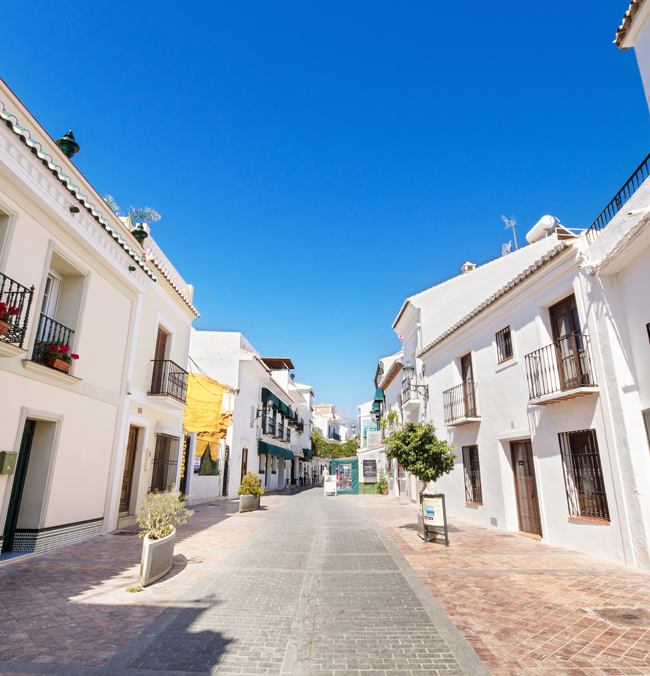Nerja and Environment
The area was inhabited since prehistoric times, as revealed by the cave paintings found in the famous cave of Nerja, known as the “prehistoric cathedral”.Nerja, located at the eastern end of the Costa del Sol, has all the ingredients that make it appealing to any visitor. Its average annual temperature of around twenty degrees, the beautiful mountain landscape of the Axarquia, and a rugged coastline with alternating beaches and cliffs, are some of the attractions.
Burriana Beach is one of the most important beaches of the municipality. Surrounded by beautiful houses, it is an extended long clean sand stroke of 700 meters long, equipped with all services and infrastructure. On a cliff above the beach is laying the Parador de Turismo.
La Torrecilla, El Salon or so called Calahonda, the last located under the Balcony of Europe, are other beaches in the urban environment. In them, visitors will find everything at hand: from urbanization, modern hotels and restaurants, shops and places to hire sports equipment. The lively Paseo de los Carabineros gives easy access to many of them.
Cave of Nerja
The Cave of Nerja, discovered in 1959, is one of the main attractions of the municipality. Declared as the Historic-Artistic Monument, the cave has about two kilometers of underground galleries which can be visited by the public. Here you can admire stunning geological formations carved by the slow passing of the centuries. High arches and spacious rooms decorated with columns, stalactites and stalagmites allow it to be known as the “prehistoric cathedral“.
The Cascade Room, named for the special arrangement adopted by their groups of stalagmites, is the privileged setting in which the Nerja Cave Festival is held for more than three decades. During this festival the most prestigious figures of music, dance and performing arts come together.The interest of the cave is also archaeological, as it houses a collection of paintings attributed to the Paleolithic, but have been found as remains of other periods, such as Mesolithic or Neolithic. The Lobby Lounge contains a remarkable collection of pottery, tools and paintings found at the scene.
Frigiliana
In the most eastern region of the province of Malaga you will find the region of Axarquia. This area overlooks the Mediterranean Sea and has an estimated population of 3,000. A thousand feet above sea level and a subtropical microclimate, arises, as if awakening from the past, praised and rewarded his old town, of Moorish heritage, where the narrow streets, winding and steep alleyways, battlements and ravelins form a singular urban fabric of small houses perch on each other.
It is a structure to which many have described as the popular architectural of purest Arabic origin in the province of Malaga.
The historical centre
Nerja’s urban layout displays beautiful examples of traditional architecture. Among its monuments include the church of Our Lady of Sorrows, patron saint of the town. Built in the sixteenth century, inside the church highlight the frescoes that adorn the dome.
On the remains of a historic coastal stronghold you find one of the most emblematic places of the town: the Balcony of Europe, now a lively ride that ends at a beautiful view over the sea.Its full festive calendar and the local tasty food, make the attractions of Nerja complete.






